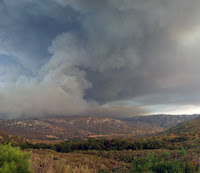
The fire that I posted about earlier today now has an official name: the “Horse Fire” (so called, I presume, because it started in the upper reaches of Horsethief Canyon). According to the last information for this evening, it has now consumed over 6,000 acres and is completely uncontained. During the day there were 4 tanker planes, 4 helicopters, 50 engines, 4 water tenders, 4 bulldozers, and 500 firemen fighting the fire. Now that its after dark, the aircraft have stood down — but the fire crews and all that equipment will be at it all night, in the relative cool and still air. We wish them all well.
This evening, just before dark, Debbie and I, along with Jim (our friend and neighbor), set off on a reconnoiter. This was prompted by the rapid growth of the smoke plume combined an ambiguous CDF message telling us that the fire was burning away from us — but that a community between us and the fire (Carveacre) was “threatened”. This made no sense to us, so we decided to see if we could eyeball it ourselves. The lack of up-to-date and accurate information in these situations is extremely frustrating. On the one hand you’re at risk of life and property from a distant foe; on the other hand you have one heck of a time finding out anything about that foe. The urge to go see it yourself is just about irresistable in those circumstances.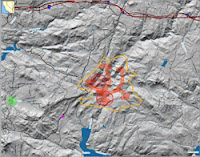
So we went. The map at right has several hand-drawn elements. The green area at left is where our home is. The purple dot near the center is where we were able to drive to (the road was closed further on). The orange circumference is my guess, based on observation from that one point, about the perimeter of the fire (as of about 7pm tonight). The red arrows are my nearly completely uniformed guess about the path of the fire, which has now broken up into numerous fires forming a ragged perimeter. The nearly circular red areas with slanting stripes are areas that showed on MODIS satellite data as having an active fire in them (as of about 11 am).
While the scene was dramatic and full of easily observed fires, it was actually quite reassuring. The fire’s center of mass was clearly at a considerable distance (at least a couple miles from where we stood), and much of the terrain between us and it had already been consumed by the fire. There were a few hot spots that were closer, in particular an entire ridge, perhaps a half mile long, that was ablaze just north of Lake Barrett. It seemed to be marching slowly and steadily toward the lake, with no action being taken to stop it. If that fire changed course and headed west, toward Lawson Peak and Gaskill Peak, that would take the fire toward us. There were also a few hotspots visible toward the junction of Lyons Valley Road and Japatul Road; if they broke loose they could also threaten us. But…these were just hotspots, and looked like (to our uneducated eyes) they could be handled by the fire crews. It certainly didn’t look like either Carveacre or Lawson Valley was in imminent danger.
The good news is the same as reported earlier, only much more so because the fire is so much larger now: an enormous swath of the fuel that was such a threat in a Santa Ana condition is now gone. Assuming we survive this one intact, our risk of a catastrophic blaze just got lowered substantially…
I saw something surprising while watching the fire, and was reminded of it as I processed my photos: there were a large number of birds in flight near the fire (I caught quite a few by accident in the photos). Many of the were either raptors, crows, or ravens. I’m guessing that they’re taking advantage of the fire, by hunting the rodents that expose themselves while fleeing the fire. That’s a twist I’d never thought of before. The mice have a choice: stand still and be roasted, or run and be eaten. Once again, for the umpteenth time, I’m very grateful that we humans don’t have to worry much about other animals trying to eat us…
Below are a selection of the bazillion photos I took at the scene. Most of these were taken with a hand-held 620mm lens (stabilized), under very challenging low-light/high-constrast conditions. Please be forgiving of the (many) technical shortcomings — these were not taken in a studio. As usual, click on any thumbnail to get a larger (sometimes much larger!) view…
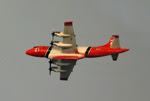
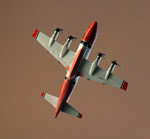
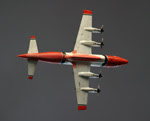
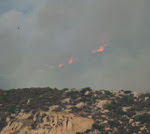
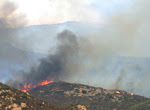
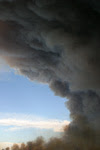

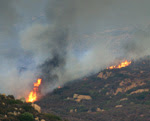
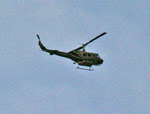

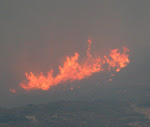
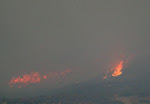
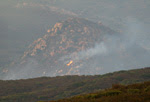
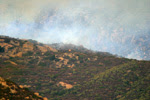

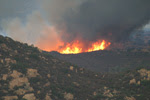

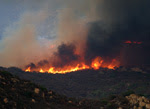
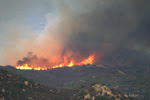
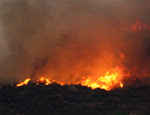
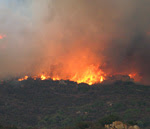
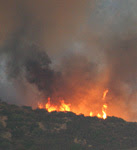
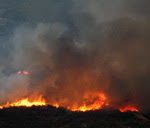
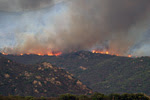
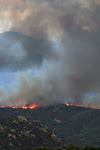
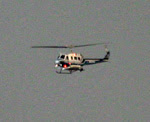
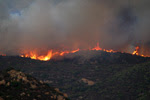
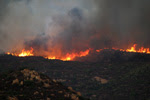
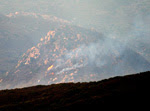
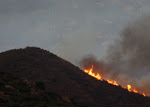
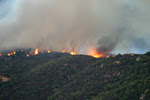


No comments:
Post a Comment